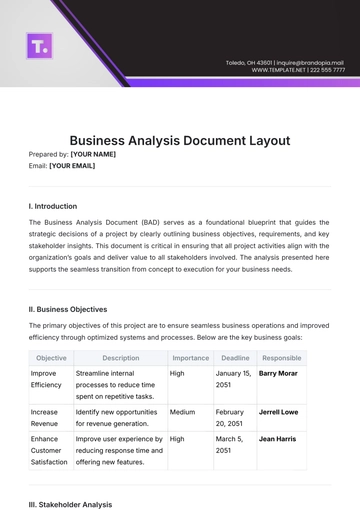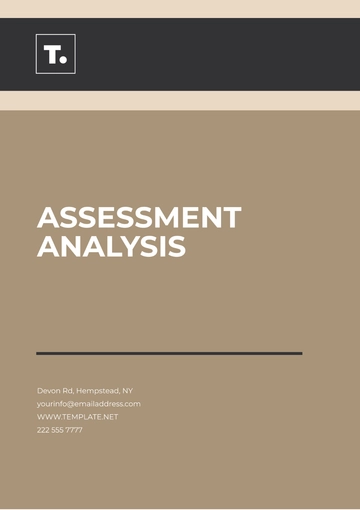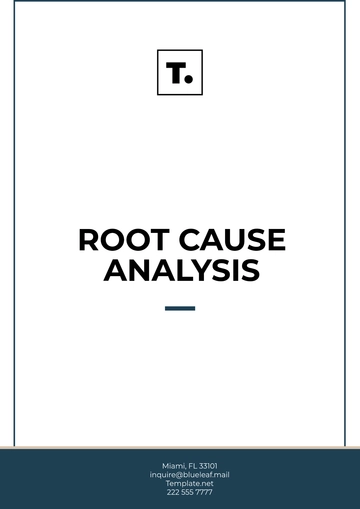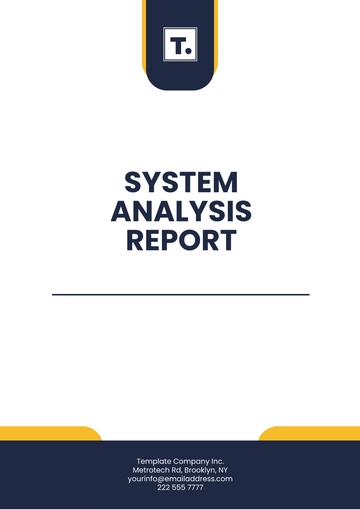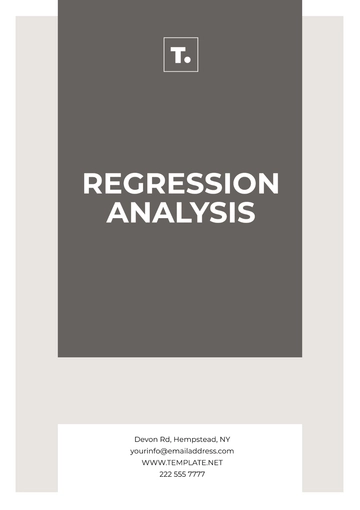Data Analysis Research
[YOUR COMPANY NAME] | [YOUR COMPANY ADDRESS]
I. Introduction
A. Overview
The autonomous vehicle market has witnessed significant advancements and growth in the year 2055. This report analyzes market trends, consumer behavior, and technological innovations in the autonomous vehicle industry. The study aims to provide insights into future market directions and strategic opportunities.
B. Key Findings
II. Introduction
A. Purpose of the Study
The purpose of this study is to analyze the current state of the autonomous vehicle market, identify key trends, and provide strategic recommendations for stakeholders.
B. Scope and Methodology
III. Market Overview
A. Current Market Trends
The autonomous vehicle market is characterized by rapid technological advancements and increasing consumer acceptance. The integration of AI technologies in vehicles has improved safety and efficiency, leading to increased adoption.
Table 1: Market Growth Projections (2055-2060)
Year | Market Size (Billion USD) | Growth Rate (%) | Market Share (North America) | Market Share (Asia-Pacific) |
|---|
2055 | 600 | 20 | 40 | 25 |
2056 | 720 | 20 | 39 | 28 |
2057 | 864 | 20 | 38 | 30 |
2058 | 1037 | 20 | 36 | 33 |
2059 | 1244 | 20 | 35 | 35 |
2060 | 1493 | 20 | 34 | 38 |
B. Key Market Drivers
Technological Innovations: Advancements in AI and machine learning are enhancing vehicle safety features.
Regulatory Support: Governments worldwide are implementing policies to promote autonomous vehicle development.
Consumer Demand: There is increasing demand for safer, more efficient transportation solutions.
IV. Consumer Behavior Analysis
A. Demographic Insights
Consumer acceptance of autonomous vehicles varies significantly across different demographic groups.
Table 2: Consumer Preferences by Age Group (2055)
Age Group | Preference for Autonomous Vehicles (%) | Safety Concerns (%) | Price Sensitivity (%) | Interest in AI Features (%) |
|---|
18-24 | 75 | 15 | 25 | 85 |
25-34 | 82 | 12 | 20 | 90 |
35-44 | 68 | 18 | 30 | 78 |
45-54 | 60 | 22 | 35 | 65 |
55+ | 50 | 28 | 40 | 55 |
B. Behavioral Trends
Younger consumers show higher acceptance and interest in AI-integrated features.
Safety remains a top concern across all age groups, influencing purchasing decisions.
V. Technological Innovations
A. Key Innovations
The autonomous vehicle market has seen several key technological innovations in 2055, driving growth and consumer adoption.
Chart 1: Major Technological Innovations in 2055
B. Future Trends
VI. Competitive Landscape
A. Market Leaders
The autonomous vehicle market is dominated by several key players who continue to innovate and expand their market presence.
Table 3: Leading Companies in the Autonomous Vehicle Market (2055)
Company | Market Share (%) | Key Innovation | Revenue (Billion USD) |
|---|
AutoTech Innovators | 22 | AI Safety Systems | 250 |
FutureDrive Corp | 18 | Autonomous Ride-Sharing | 200 |
NextGen Mobility | 15 | Advanced Navigation Technologies | 180 |
RoboCar Enterprises | 12 | Connectivity Solutions | 150 |
GreenRoute Auto | 10 | Enhanced Battery Technologies | 120 |
B. SWOT Analysis
Strengths: Technological leadership, strong brand recognition.
Weaknesses: High research and development costs.
Opportunities: Expansion into emerging markets, partnerships with tech companies.
Threats: Regulatory challenges, cybersecurity risks.
VII. Strategic Recommendations
Based on the analysis, the following strategic recommendations are proposed for stakeholders in the autonomous vehicle market:
Investment in R&D: Increase investments in AI and machine learning to enhance vehicle safety and efficiency.
Market Expansion: Focus on expanding into emerging markets in Asia-Pacific and Latin America.
Partnerships: Collaborate with technology firms to integrate advanced features into vehicles.
Consumer Education: Implement programs to educate consumers about the benefits and safety of autonomous vehicles.
VIII. Conclusion and References
A. Conclusion
The autonomous vehicle market is poised for significant growth in the coming years. Technological advancements and increasing consumer acceptance will drive the industry's expansion. Stakeholders should focus on innovation, market expansion, and strategic partnerships to capitalize on emerging opportunities.
B. References
Smith, J. (2055). Autonomous Vehicles and AI: Revolutionizing Transportation. Future Mobility Journal, 10(4), 45-62. Retrieved from Future Mobility Journal.
Lee, A. & Patel, R. (2055). Global Market Analysis of Autonomous Vehicles: Trends and Projections. International Journal of Automotive Technology, 15(7), 125-143. Retrieved from International Journal of Automotive Technology.
Martinez, C. (2055). The Impact of AI on Autonomous Vehicle Safety and Consumer Acceptance. Journal of AI and Transportation, 22(3), 89-104. Retrieved from Journal of AI and Transportation.
Research Templates @ Template.net





